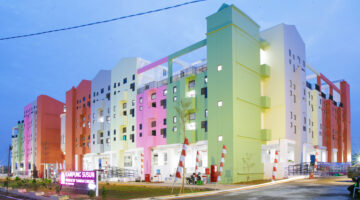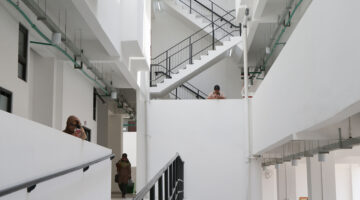Neighborhood Upgrading Program (NUP), Trinidad and Tobago
Main objectives of the project
The Neighborhood Upgrading Program (NUP) in Trinidad and Tobago targets enhancing living standards and housing conditions for low and middle-income households residing in squatter settlements. Comprising three key components, the program emphasizes regularization and enhancement of squatter settlements, provision of housing grants, and strengthening institutional capacities within the Ministry of Housing and Urban Development. With criteria ensuring fair distribution and ongoing evaluation, the NUP, supported by the Inter-American Development Bank (IDB), emerges as a successful initiative addressing dire housing needs and promoting social and environmental considerations.
Date
- 2017: Implementation
Stakeholders
- Trinidad and Tobago’s Ministry of Housing and Urban Development
- IDB
Location
Country/Region: San Fernando
Description
Trinidad and Tobago faces a housing deficit exceeding 100,000 units, compounded by significant squatting on state land, affecting up to 19% of the population. In response, successive governments have initiated various programs aimed at formalizing informal settlements and providing occupants with secure tenure. To address the ongoing housing needs, two partnership programs with the private sector have been launched. These involve collaborations with medium and large contractors under the Housing Development Corporation (HDC), as well as the Infill Lots program, which engages small contractors to build on vacant lots within HDC-owned developments. One of the main programs, though, is the Neighborhood Upgrading Program (NUP).
The primary objective of the NUP is to enhance the living standards and housing conditions of low and middle-income households residing in squatter settlements. This is achieved through a multifaceted approach that includes infrastructure upgrades, provision of home improvement grants, and facilitation of incremental housing construction or purchase. Additionally, the program aims to foster the creation of equitable, healthy, and sustainable communities throughout Trinidad and Tobago.
The NUP comprises three key components. Firstly, it involves the regularization and enhancement of squatter settlements, focusing on infrastructure improvements and regularization of land tenure for occupants. This aspect is overseen by the Land Settlement Agency (LSA), which operates under the authority of the State Lands (Regularization of Tenure) Act of 1998 and is tasked with legalizing illegal occupation at 254 designated sites across the country. Secondly, the program offers housing grants administered by the PMCU, which provides financial assistance to eligible low-income individuals for various housing-related purposes such as home improvements, construction, or purchases. Lastly, the NUP includes efforts to strengthen sectoral and institutional capacities within the Ministry of Housing and Urban Development and its affiliated agencies. This involves activities such as acquiring necessary hardware and software, automating program reports, and engaging in regional and international forums to exchange best practices in housing and urban development.
To qualify for grants, applicants must meet specific criteria including income limits, citizenship, property ownership or permission, and no prior benefit from housing grants. The program offers financial assistance for home construction or purchase, with varying amounts based on income levels and regional property values. Beneficiaries are selected through a random process and undergo verification interviews to ensure accuracy.
Though formal evaluation is ongoing, the IDB deems the NUP successful, having reached numerous families in dire housing need, often living in poverty. The program emphasizes social and environmental considerations and has demonstrated reasonable unit costs compared to similar initiatives. Replication of the program across Trinidad and Tobago is viable given established procedures and capacity. The Land Settlement Agency oversees squatter settlement regularization, while the Ministry has developed internal capabilities to administer housing subsidies independently.
Financing remains a challenge for project expansion, but the IDB expresses continued willingness to support such initiatives, having already provided three consecutive loans for housing and related projects in the country.








